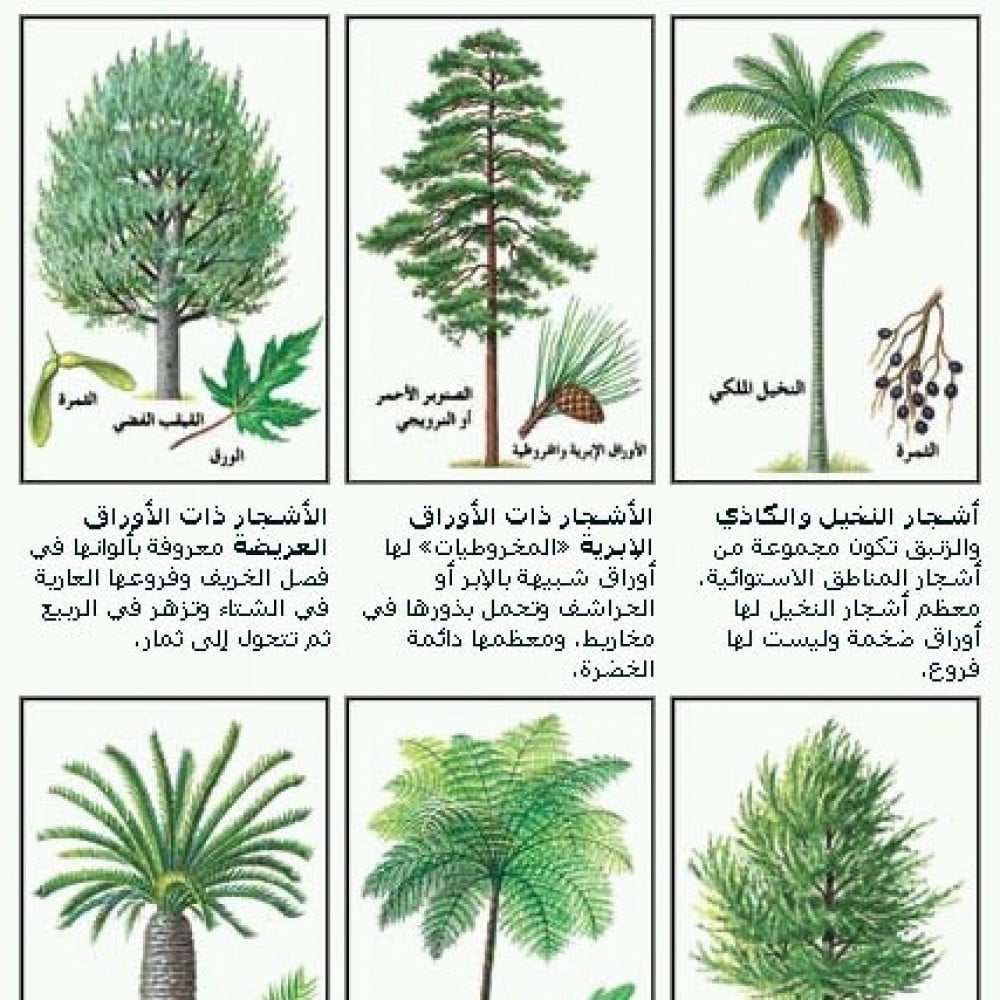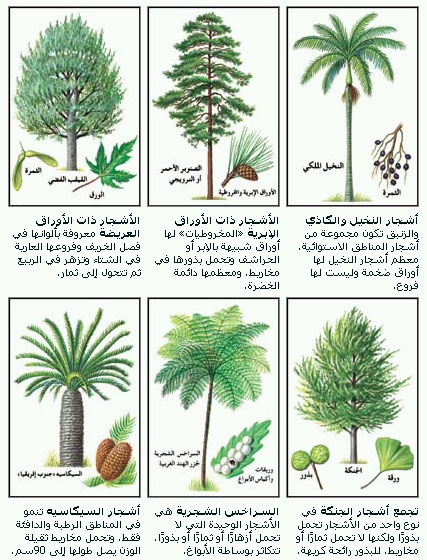The Six Major Tree Groups Trees can be divided into six major groups as shown above. All trees within each group are similar in appearance and have other characteristics in common.
There are approximately 20,000 species of trees. These trees vary between strong forest trees and fragile ornamental trees. The most diverse tree formations grow in the humid tropics. Scientists interested in botanical studies divide plants with similar characteristics into different groups. See: Botany. Botanists group each type of tree with other plants that share characteristics with these trees. Therefore, we find that a group of these plants includes some trees, some shrubs or climbing plants, and some herbaceous plants. For example, we find that false acacia trees, rhododendrons, and alfalfa all belong to one family, and these plants have been grouped together in one group. Because they reproduce in the same way and have similar flowers. On the other hand, we find that some similar trees, such as tree ferns and palm trees, belong to different groups of plants.
Trees can also be divided into six groups, according to the different characteristics they have in common. These six groups are:
1- Trees with broad leaves.
2- Trees with needle leaves (conical).
3- Palm trees, lilies and lilies.
4- Cycad trees.
5- Tree ferns.
6- Ginkgo trees.


